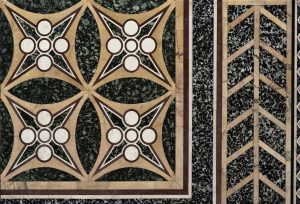Portrait bust of Nero
Found in 1869 in the cryptoporticus below the sacred area of the temple of Apollo, this portrait represents one of the most life-like images of the emperor Nero, both for its extraordinary technical quality and for the sharpness of the emperor’s features. The head is shaped by the wavy forms of the subject’s hair, with a row of neatly arranged locks falling onto the forehead. The bust has small, slightly sunken eyes beneath a well-pronounced brow ridge, as well as furrows at the edges of the mouth and a beard rendered with shallow incisions. All of these elements, aside from giving the sculpture a greater volume, confer an expression of austerity to the emperor’s face. The two small holes present on the left side of the head and at the base of the skull, as well as the relatively unfinished rendering of the hair atop the head, suggest that the bust was meant to be completed by a veil which covered part of the head. This piece is on display at the Palatine Museum and is part of the museum’s accessibility route: next to the original is a 3D reproduction available for all visitors to explore.




